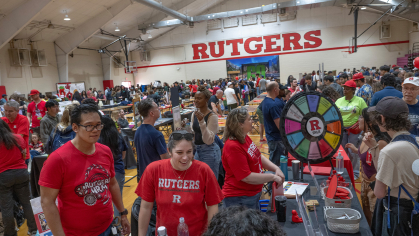Native American Acknowledgment Gardens Honor Local Indigenous Communities
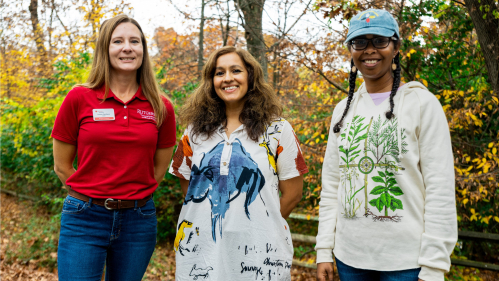
Project at Rutgers Gardens celebrates the continued presence of Indigenous communities in New Jersey
For generations, Native Americans’ relationships with their land have been systematically targeted through removal policies. Negative portrayals of Native American communities resulted in numerous environmental and cultural injustices, including the targeting of Native American land for waste disposal sites.
But a project at Rutgers Gardens seeks to bring attention to this wrongdoing and rectify some mistakes of the past. Rutgers faculty and the director of Rutgers Gardens are collaborating with Indigenous communities in New Jersey to explore how they might install more native plants of cultural significance.
Born out of a landscape architecture course taught by assistant professor of teaching Anita Bakshi, the Our Land, Our Stories project brings together the Department of Landscape Architecture and the Ramapough Lunaape Nation to focus on environmental justice advocacy and curriculum development for Native American history and contemporary Indigenous land relations.
In Spring 2022 their team received an IDEA Innovation Grant from Rutgers to explore ideas and possibilities for creating a garden on campus that will acknowledge Native American history and celebrate the continued presence of Indigenous communities in our state, including through the incorporation of plants significant to Native American communities for medicinal, ceremonial and agricultural uses.
The collaboration includes Holly Nelson, associate professor of professional practice in the School of Environmental and Biological Sciences; Jameson Sweet, an assistant professor of American studies in the School of Arts and Sciences and a member of the Lakota/Dakota nations; and Lauren Errickson, director of Rutgers Gardens and Campus Stewardship.
“In the era of climate change, Indigenous people have vital knowledge of North America’s ecosystems gleaned from many thousands of years living with and shaping the world around them. The garden project provides a starting point for Indigenous communities to share this much needed knowledge, but it is also a starting point for the Native American communities in New Jersey and the region to heal from centuries of violence, land theft and the attempted destruction of their cultures and ways of life by settlers. A return to Indigenous land stewardship can help combat climate change and rectify the dispossession of lands belonging to the sovereign tribal nations within the state,” said Sweet.
Community members were invited to a recent event at the gardens to learn about some of the indigenous plants already on the grounds and how the gardens seek to expand their offerings. Led by Errickson and Karelle Hall, a member of the Nanticoke Indian Tribe of Delaware and a Ph.D. student at Rutgers, visitors were taught native names from the Lenape Unami dialect and uses of plants, as well as ways to tell the differences between them.
“We’d like to not only acknowledge, but really better connect with, the Indigenous communities who have a deep relationship with this land and the native plants that grow here. We hope that we can help foster meaningful collaborations between the university and Indigenous communities through projects like this at Rutgers Gardens,” said Errickson.
Here are some of the native plants currently at Rutgers Gardens:
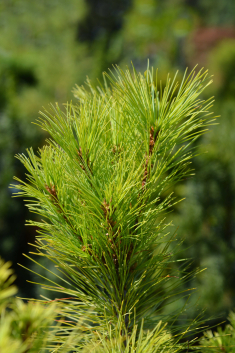
Eastern White Pine (kuwe)
White pine trees are known for medium-to-long length smooth needles, found in fascicles of five. The greenest pine needles can be used to brew a tea that is good for the immune system and can help clear colds. The pines that have fallen from the tree and become brown are collected and used to weave baskets and other home goods.
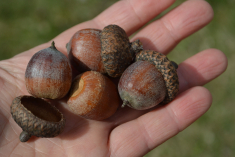
Red Oak (wisahkakw) and White Oak (wiponkòkw)
Oak trees are important as a host for caterpillars, butterflies and moths that help pollinate plants, as well as serving as a food source for native birds. White oaks have a greyish hue to their trunks and are crackled throughout with rounded edge leaves, while red oaks have thicker bark that forms chasms up and down the tree and pointed tip leaves.
Oak tree acorns historically have been used to create a paste or a flour that can be used in baking. Acorns cannot be used raw because of the high level of tannins within them. Indigenous communities would leech out the tannin by soaking and washing the acorns several times before they would be transformed. One of the popular dishes made with acorns by Native communities is a venison and acorn stew.
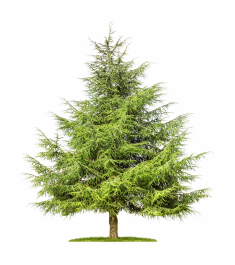
Cedar (pëpxòkwës)
Cedar trees are seen as sacred to the Lenape. Cedar is also burned as part of ceremonies. It is good for cleansing and purification.
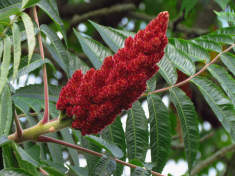
Sumac (këlëkënikànakw)
Sumac has been used by Native people for hundreds of years. The main way to tell the difference in the type of sumac is the color of the berries: the white are poisonous and the red are safe to use. Sumac berries have been used to brew lemonades since they have a smooth, lemony flavor to them. The leaves can be ground with tobacco for smoking purposes.
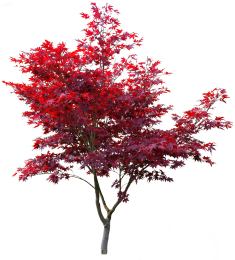
Red Maple (ansikëmès)
The red maple blooms very early in the spring and is an essential plant food for early pollinators but is not ideal for sap collection like sugar maple trees. They are identified by their bright red, five-lobed leaves that are slightly serrated.
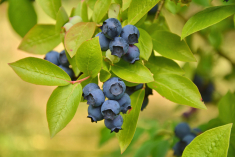
Blueberries
New Jersey is the highbush blueberry capital of the country. Blueberries are used in many recipes, from jams and sauces to blueberry leaf tea. They contain high levels of antioxidants, so they are eaten for nutrition. Blueberries are also used for ceremonial purposes.

